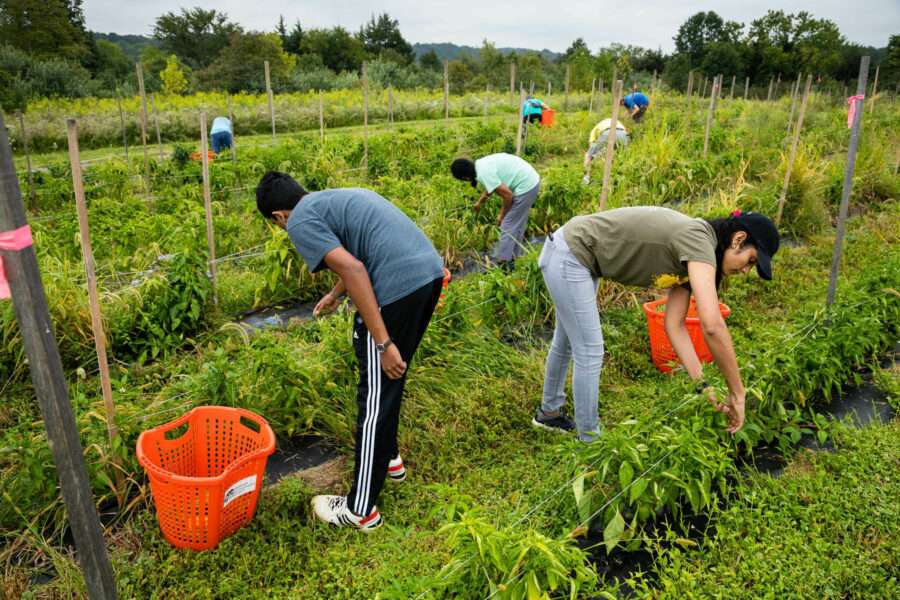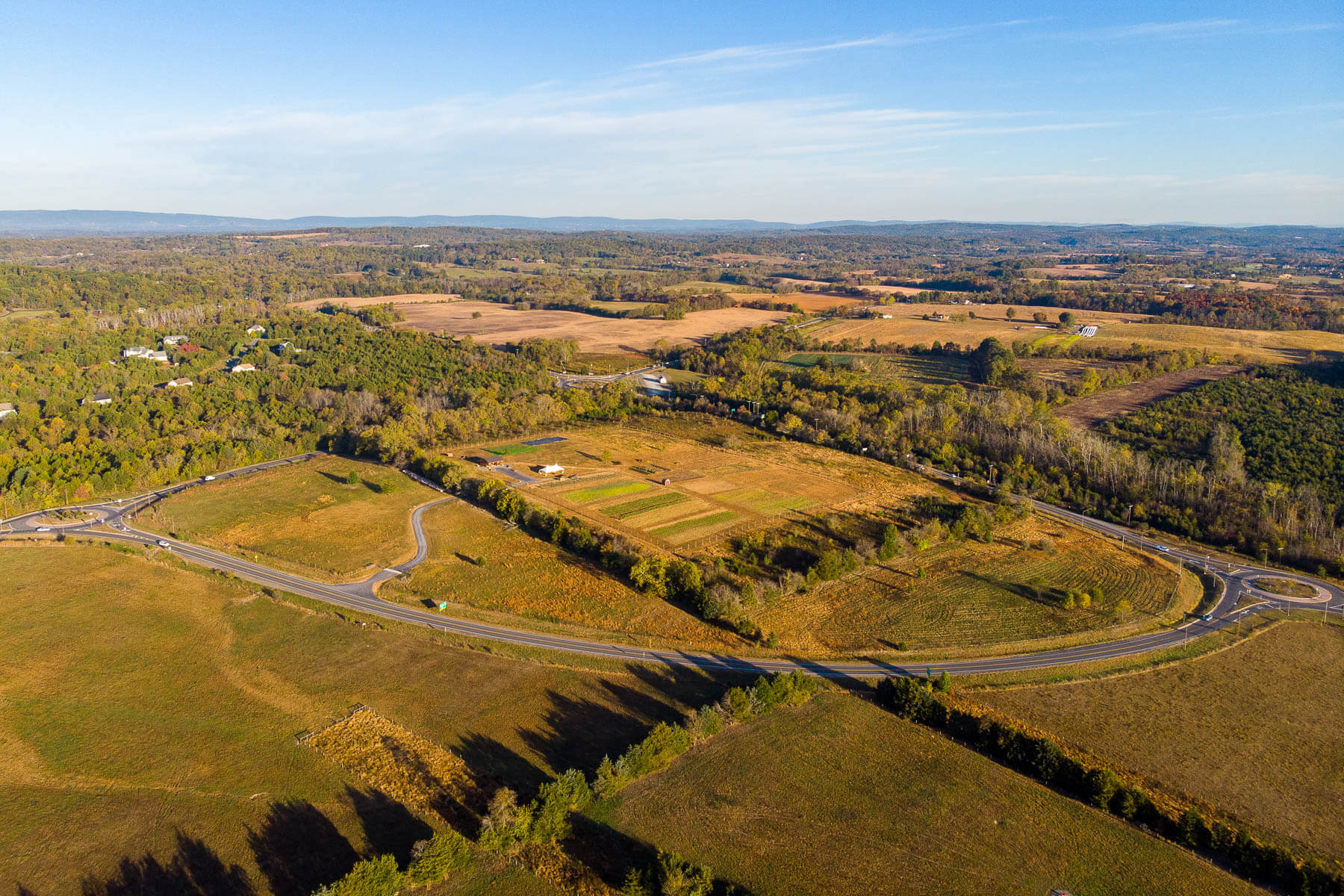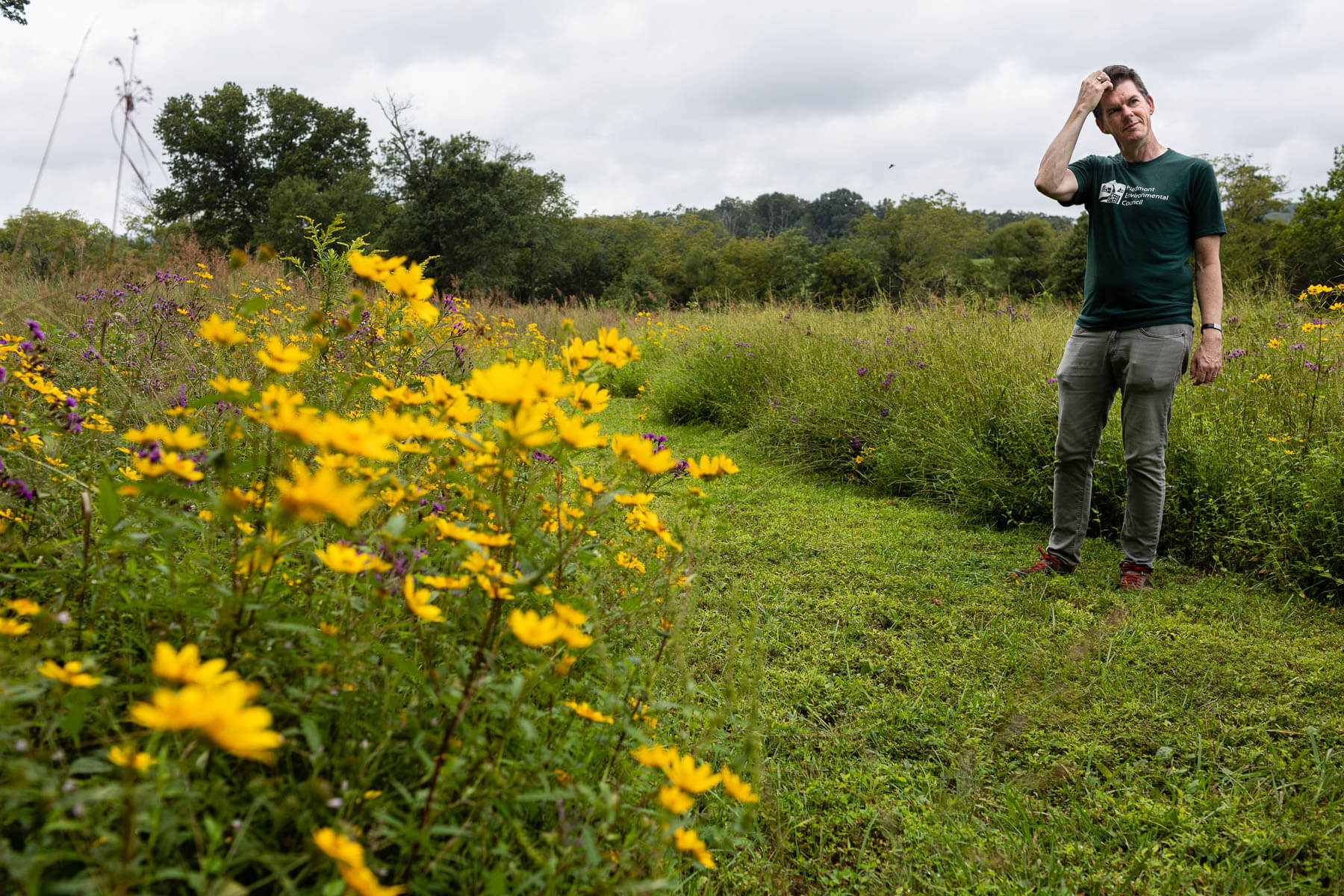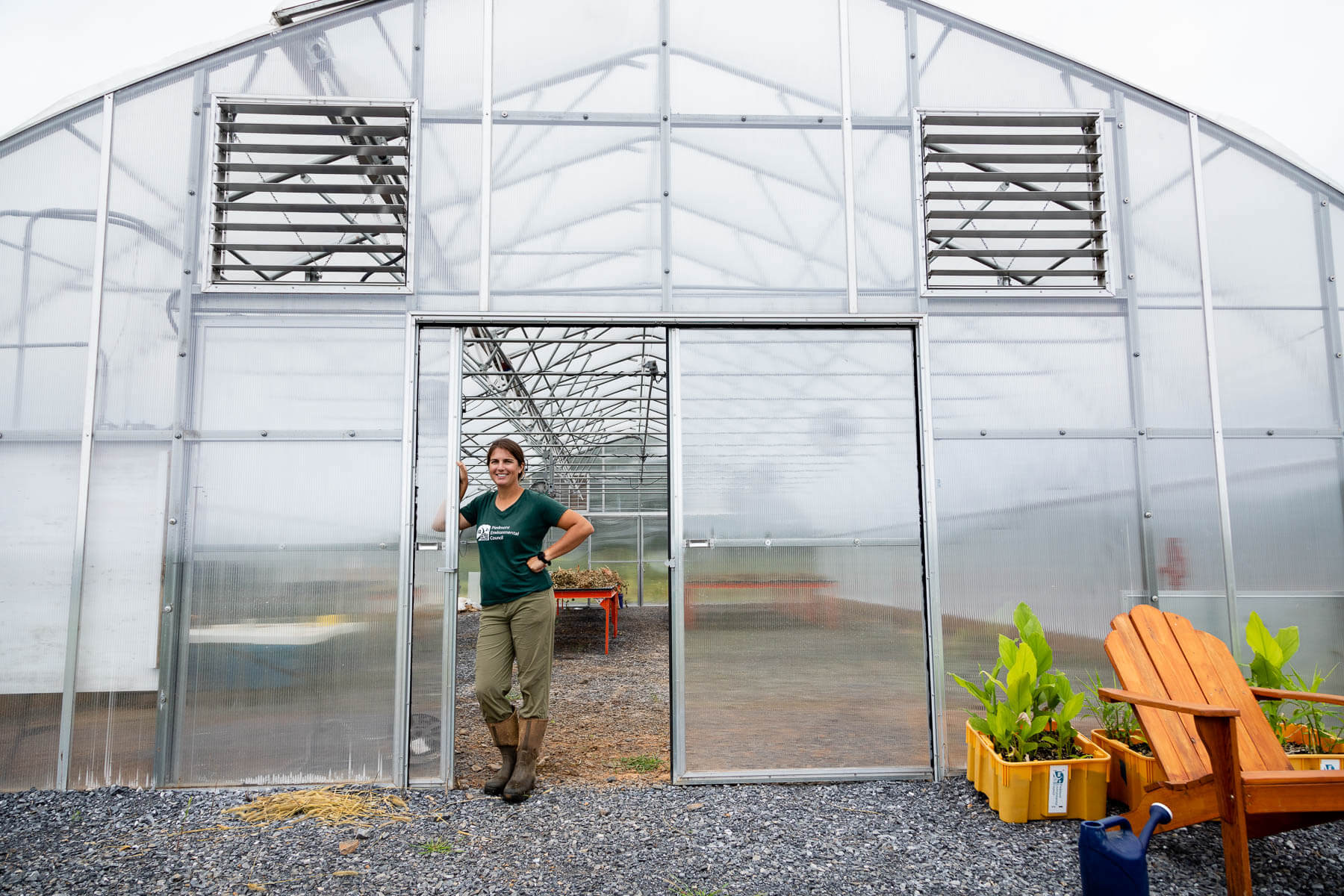The first farm on the left

At the intersection of Route 15 and Route 50 in Northern Virginia, the suburban sprawl in one of the state’s fastest-growing counties comes to a hard stop.
Known as Gilberts Corner, this crossroads is the entry point to rural Loudoun County—a stretch of land where shopping centers and residential developments give way to farms, orchards, wineries and a striking view of the Bull Run Mountains.
“It just gives you a certain feeling,” explains Mike Kane, director of conservation at the Piedmont Environmental Council (PEC), which helps property owners conserve and steward their land in the region. “Suddenly all the cares of busy Northern Virginia wash away.”
There’s no welcome sign for the area; but there is Roundabout Meadows, one of the first farms travelers along Route 50 encounter as they enter rural Loudoun County. Comprised of a community farm, cattle pasture and grassland habitat restoration area, the project has not only helped reduce the stress of suburbanites, but improved local water quality, fed hundreds of people during the COVID-19 pandemic and given residents of suburban Loudoun access to the region’s rural roots.
The success of the property is due in large part to a holistic land management approach taken by PEC, a nonprofit organization designed to promote and protect the rural mid-section of Virginia known as the Piedmont Region. Their work reveals the myriad benefits that land conservation can provide people and their environment—especially when the two are viewed in tandem.

Making water quality a priority
Weaving through Roundabout Meadows is Howser's Branch, a gentle stream within the Goose Creek watershed and an environmental priority for PEC’s management of the land.
“Our first task was to address water quality,” Kane said, reflecting on the initial phase of the project.
According to Kane, PEC’s organizational goal is to permanently preserve 50% of the Goose Creek watershed, which connects to the Chesapeake Bay through the Potomac River. Projects such as Roundabout Meadows give the organization the opportunity to not only preserve the water but greatly improve its quality.
Before PEC took over, Howser’s Branch was a sad site. Stream flow was stagnant, the bank was eroding and in some parts, E. coli samples were ten times higher than the standard set by the Environmental Protection Agency. Cattle were the primary culprit, which for forty years had unfettered access to the tributary, trampling over protective vegetation and leaving manure in the water. Compounding this issue was soil that had hardened over the years, limiting its ability to soak up high levels of nutrients that stormwater brings into rivers, a significant source of pollution across the watershed.

PEC quickly addressed these problems at Roundabout Meadows. Working with the Loudoun Soil & Water Conservation District, the team put in two miles of streamline exclusion fencing to keep cattle out of the water, followed by nearly a mile long plumbing system that pumps clean drinking water for the livestock from a well into six basins on the property. After recognizing that a remnant wetland area was really marginal pastureland, PEC decided to exclude the cattle altogether and is now restoring this seven acre area, allowing native vegetation to return and thrive along Howsers Branch. A new walking trail passes right through this wetlands preserve.
As a result of these best management practices, Howser's Branch is now much cleaner. E. coli levels are down, and the water is clearer. Wildlife activity continues to increase and with it an influx of locals and out-of-towners looking to enjoy the view.
Feeding a community during the pandemic
When PEC launched the Community Farm at Roundabout Meadows in 2019, a primary goal was to curb food insecurity in the region.
“Everything we grow we donate to Loudoun Hunger Relief,” explains farm manager Dana Melby, who joined PEC in 2018 to guide the project.
Now in the midst of the COVID-19 pandemic, this mission is more important than ever. Loudoun Hunger Relief’s demand for food has greatly increased as unemployment surges, forcing PEC to step up in a big way. Thanks in large part to a record-breaking number of volunteers, the farm was able to extend their typical growing season and more than quadruple their output to 22,000 pounds of food. During the busy summer harvest, volunteers have been able to experience first-hand how important community farms can be during uncertain times.
“Food insecurity has been in mainstream media in a way that it hasn’t been in the past,” says Melby, “And people have really made that connection that our food system is incredibly fragile.”

While the farm is now a staple for the community, there was a time when many doubted that the project would ever come to fruition. Before Melby took over in 2018, the property was in a poor state due to years of neglect. The soil was sub-par, and a combination of massive trees dominating the landscape and countless rocks made growing vegetables a difficult task.
“Really, it was just a hope and a dream to have an agriculture operation,” says Melby.
Poor conditions aside, Melby and farm property specialist Pete Walton, the two PEC staff members working the farm, have transformed the property into four acres of thriving crops, using a suite of organic farming techniques to get the job done. According to Kane, Melby has done more with the property than many thought possible. As he tells the story of Melby’s first visit to the space, the young farm manager looked over the rugged, disheveled terrain and said simply, “I can grow something here.”
Keeping up with development
Loudoun County is one of many fast-growing regions in the Chesapeake watershed. Population growth and development increase not only put a strain on the local environment but cut people off from rural landscapes and the culture and heritage that come with it.
“[The farm] helps people that live in suburban and urban areas understand why rural land conservation can be important,” says Kane.
Bridging the gap between communities has always been something that nature does well. Roundabout Meadows is just one example of how smart management of the land can reap all sorts of cultural and environmental benefits.

Comments
There are no comments.
Thank you!
Your comment has been received. Before it can be published, the comment will be reviewed by our team to ensure it adheres with our rules of engagement.
Back to recent stories